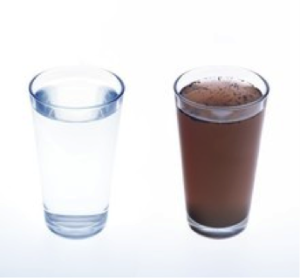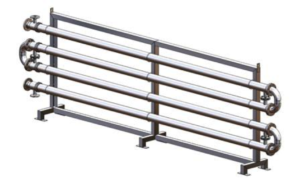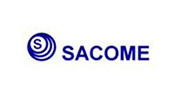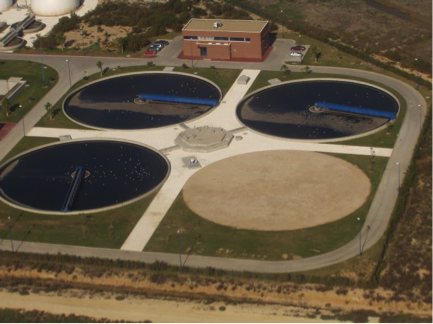
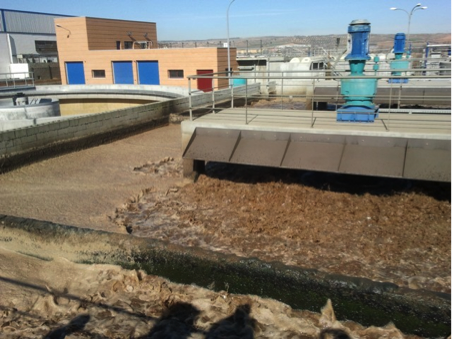
Due to the high levels of solids in the sludge Sacome’s model TF20 were selected as the ideal solution because:
• Mono-tubular design. The TF20 model consists of 2 concentric tubes in which the water used as heating medium flows through the annular space, while the sewage sludge flows through the inner tube. Unlike the traditional multi-tube, composed of a tube bundle with smaller inner tubes, there is only one process channel.
• Modular design. As it is a modular design, it is easy to dismantle the units for cleaning or to add more modules to handle additional capacity.
• Process duty. The heat exchanger can process a wide range of capacities and can be configured with several lines in parallel so there is no need to stop production for cleaning.
• Corrugation. The inner tubes are hard corrugated in order to increase the turbulence of the product. This reduces the risk of fouling and increases.
• Materials of Construction. Due to the presence of phosphate and ammonium precipitated (struvite) 316L stainless steel was recommended. This is more resistant to corrosion than 304L.
• Insulation. In this particular case the heat exchangers were insulated with 40 mm of mineral wool clad in aluminum to reduce the heat losses to the environment.
